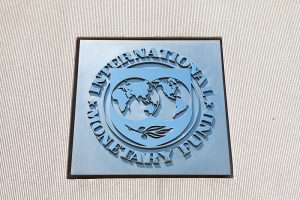Debt Relief Needed to Preserve 30 Years of Progress
 A grand coalition of creditors is to provide debt relief to the world’s least developed countries. Earlier this week, the International Monetary Fund (IMF) took the lead and cancelled some $214 million in debt repayments owed by 25 of its most vulnerable member states. IMF Managing Director Kristalina Georgieva explained that countries qualifying for assistance under the $500 million Catastrophe Containment and Relief Trust (CCRT) may direct more of their scarce financial resources towards public healthcare and programmes aimed at lessening the impact of the pandemic.
A grand coalition of creditors is to provide debt relief to the world’s least developed countries. Earlier this week, the International Monetary Fund (IMF) took the lead and cancelled some $214 million in debt repayments owed by 25 of its most vulnerable member states. IMF Managing Director Kristalina Georgieva explained that countries qualifying for assistance under the $500 million Catastrophe Containment and Relief Trust (CCRT) may direct more of their scarce financial resources towards public healthcare and programmes aimed at lessening the impact of the pandemic.
The United Kingdom, Japan, and a few other donor countries last month pledged additional funds to the trust. The vehicle was set up in 2015 to provide emergency debt relief to low-income countries facing natural disasters or health crises. In extreme cases the trust may cancel a country’s entire stock of debt owed to the IMF.
During a video conference on Tuesday, G7 finance ministers and central bank governors promised to support the efforts of the IMF and World Bank to help reduce the debt burden of the world’s poorest countries as they deal with the consequences of the pandemic. The meeting was hosted by US Treasury Secretary Steven Mnuchin who agreed to provide a ‘time-bound’ suspension of debt repayments to countries eligible for World Bank concessional financing. The G7 will join a wider G20 initiative currently in the works to suspend up to $18 billion in debt repayments.
Multilateral lenders are concerned that thirty or more years of economic and social development may be lost as the group of least developed countries watches global demand for their exports evaporate whilst facing an escalation of pandemic-related expenditure. In a study citing research conducted by King’s College London and published just weeks before the pandemic hit, aid charity Oxfam warned that some 500 million people could slip back into poverty unless a major bailout is organised.
A disconcerting number of countries in Sub-Saharan Africa was already teetering on the brink of default after the commodities super cycle of the 2000s petered out and left them with heavy debt loads resulting from large infrastructure investments. In late March, Mrs Georgieva said that concerted action by all creditors, including commercial banks, is needed to avoid a full-blown debt crisis. The IMF estimates that up to $2.5 trillion is ultimately needed to help distressed developing countries meet their financial commitments.
Over the past few weeks, more than 80 member states have contacted the IMF to explore ways of obtaining assistance. Mrs Georgieva pointed out that many of them are dealing with a series of simultaneous setbacks as capital takes flight, commodity prices collapse, and domestic demand dries up.
However, efforts to lighten the debt burden for the poorest countries are hampered by past experience. Since the last write-off decided during the G8 (G7+1) conference of 2005, when some $40 billion was cancelled, the countries that benefitted most moved quickly to contract new debt.
The deluge of credit that followed the debt jubilee originated in China which deployed its financial muscle as a tool to broaden the country’s diplomatic footprint in Africa and elsewhere. China did so by partially displacing the World Bank as the preferred partner in large-scale infrastructure undertakings – a number of which promptly turned into white elephants.
Slightly less mindful of thorough planning, good governance and sound project management, the Chinese offered not only vast amounts of low- to no-doc credit, but also supplied the engineers, workers, and building materials. However, countries unable to meet their financial obligations to Beijing fell into debt traps and were subjected to humiliating penalties. In the absence of proper feasibility studies, many of the projects financed and built by the Chinese under the Belt and Road Initiative (BRI) became heavy millstones instead of roaring engines of development.
Sri Lanka offers a case in point. The country took an estimated $8 billion in Chinese credit, including $301 million at 6.3 percent annual interest for the construction of the Hambantota Port, touted as the ‘biggest harbour constructed in the 21st century’. The port underperformed from day one, as have most other large projects financed with Chinese credit. In 2017, The Sri Lanka government was forced to hand Hambantota Port to China in lieu of payment after the country ran into financial trouble over its high debt load.
Creditor nations are currently looking for ways to help emerging markets weather the pandemic’s economic fallout and financial consequences without indirectly funnelling funds to China. It doesn’t help that most, though by no means all, Sub-Saharan countries that now urgently need support, paid scant attention to improving governance during the almost 20 years that their economies boomed.
Though fatigue amongst donors is palpable, so is the recognition that a large-scale crisis in emerging and pioneer markets will lengthen to path of post-corona recovery for developed nations as well. The pandemic’s timing is particularly unfortunate. In a landmark study released late last year, the World Bank concluded that the latest surge in credit flowing to emerging market and developing economies was the ‘largest, fastest, and most broad-based’ in nearly five decades.
Global Waves of Debt compares four distinct periods of significant debt accumulation since 1970. The study found that in developing countries the ratio of all debt (government, corporate, and private) to GDP rose by 54 percentage points to 168 percent since 2010 when the debt build-up gathered speed. The analysis also states that about half of the 521 ‘national episodes of rapid debt growth’ studied resulted in financial crises that depressed per capita incomes and slowed investment. Even more disconcerting, the report noted that most governments have failed to invest in human capital even as credit was widely available.
Whilst the need for debt write-offs on a massive scale is recognised by most, the conditions attached to this in part self-serving largesse may yet cause heated debate, especially when attention turns to the plight of larger emerging market economies that have made a business model out of debt defaults such as Argentina.
The recipient of a controversial $56 billion bailout package put together in record time only months ago, the South American country has singularly failed to implement the full set of structural fiscal reforms promised. With inflation running at almost 50 percent and the economy set for a 3 percent contraction even before the pandemic struck, Argentina now seeks to leverage the crisis to renegotiate its national debt on a take-it-or-leave-it basis, insisting on an interest rate ceiling of 2 percent.
Though the IMF has called on private lenders to accept a ‘haircut’, most seem unwilling to do so and express annoyance at the Argentine government’s refusal to engage and communicate constructively. Bondholders also remember the precedent set by the so-called ‘vulture funds’ that for more than a decade refused to accept a haircut and were ultimately rewarded with generous terms, proving that stamina pays off.
However, this time stamina may only add an extra layer to the economic disaster in the making. Recriminations over the way the debt jubilee of 2005 was mishandled are likewise unhelpful. The global nature of the economic recession caused by the pandemic, requires a global response. As the IMF showed in its latest growth forecast, released earlier in the week: there are no winners in this recession. Even on a global scale, the corona virus acts as a great equaliser and no economy is more equal than others.
You may have an interest in also reading…
Employers Need to ‘Catch Up’ with Looming Covid Mental Health Crisis
When it comes to workplace wellbeing, there has been a polarised response to the pandemic. A third of UK employees
Out with the Old: President Biden Sets to Work, COVID Top Priority
Freshly installed in the Oval Office, the 46th president of the United States immediately set to work reversing a slew
Business in Times of Corona: The Dangerous Fruit of the Magic Money Tree
In one of life’s little ironies, it was not the senator from Vermont but the billionaire businessman from New York


















































































